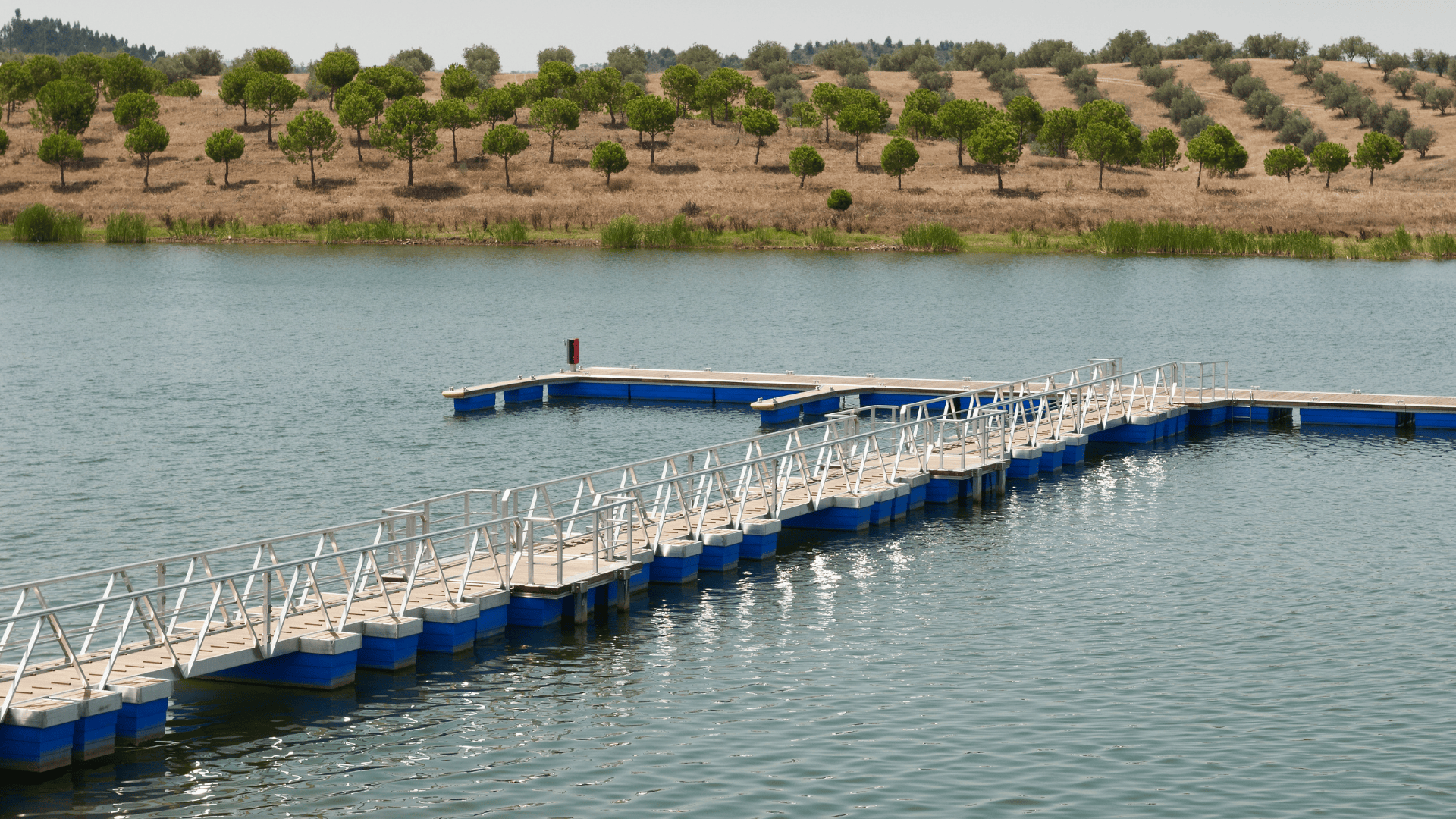Waterfront properties are often subject to the unpredictable rhythms of nature. Whether you’re dealing with spring melt, summer droughts, or tidal changes, fluctuating water levels can have a significant impact on the usability and safety of your dock. That’s why floating docks have become a preferred choice for homeowners, marinas, and seasonal property owners alike. Unlike traditional fixed docks, floating docks are designed to rise and fall with the water, maintaining functionality and access in virtually any condition.
Water level fluctuation is one reason many shoreline owners consult sites like American Muscle Docks before installing a dock system, ensuring their setup is built to perform in both high and low water conditions.
Here’s how floating docks handle changing water conditions, and why they’re such a smart solution.

1. Buoyancy-Driven Design
The core advantage of floating docks is simple: they float. Built on air-filled or foam-filled pontoons (or float drums), these docks stay on the surface of the water at all times. When the water level rises, the dock floats higher. When the water level drops, the dock lowers with it. This eliminates the need for adjustments or reconstruction when conditions change.
Why it matters:
No matter how much the water fluctuates, your dock remains accessible and level with the water’s surface.
2. Anchoring Systems That Move with the Dock
Floating docks are held in place using flexible anchoring systems, such as cables, pilings, or hinge connections, that allow vertical movement while keeping the dock secure. These anchoring solutions ensure the dock doesn’t drift away but still moves freely up and down with the tide or seasonal water shifts.
Why it matters:
You get stability and reliability without sacrificing adaptability, even in rough or changing water.
3. Modular Construction for Versatility
Many floating docks use modular construction. This means you can configure the layout and buoyancy for your specific site and needs. You can also easily reconfigure or reposition your dock system if water conditions change drastically over time.
Why it matters:
Modular floating docks can be restructured to fit new shoreline contours or access points caused by erosion, flooding, or drought.
4. Ideal for Variable Water Environments
Floating docks are especially useful in areas with:
- Tidal fluctuations
- Reservoirs or dams
- Flood-prone rivers
- Seasonal snowmelt or droughts
In all of these environments, fixed docks often become submerged or completely unusable during water level changes. Floating docks, by contrast, adjust automatically.
Why it matters:
You maintain uninterrupted access to the water, no matter the season or conditions.
5. Accessibility Remains Constant
One major issue with fixed docks is access. If the water level drops, the dock may end several feet above the surface. If it rises, the dock may become submerged. Floating docks solve both problems. Many systems include adjustable ramps that shift with the dock, providing safe and reliable access at all times.
Why it matters:
You avoid dangerous gaps, steep climbs, or submerged platforms, even as water levels rise or fall dramatically.
6. Durability in Harsh Conditions
High-quality floating docks are built with weather-resistant materials like aluminum, composite decking, or treated wood. The flotation components are sealed and protected against punctures, UV exposure, and water damage. Brands like American Muscle Docks focus on robust construction to ensure longevity, even with constant movement and environmental stress.
Why it matters:
You don’t have to compromise between flexibility and strength. Floating docks can withstand harsh elements year after year.
Final Thoughts
Rising and falling water levels are a natural part of life on the water, but they don’t have to interrupt your enjoyment or safety. Floating docks offer an elegant, engineered solution that moves with nature, not against it. By automatically adjusting to water levels, maintaining stable access, and withstanding environmental wear, floating docks provide unmatched reliability for seasonal homes, marinas, and waterfront retreats.
When choosing a dock system designed to perform under pressure, many homeowners and businesses turn to American Muscle Docks for their proven durability and customizable options. Whether you’re on a calm lake or a fast-moving river, a floating dock ensures that access to the water is always just a step away.
Frequently Asked Questions
Q: How much can floating docks rise or fall?
Floating docks can handle significant water level changes, typically from a few inches to several feet, depending on their anchoring and design.
Q: Can floating docks be used in deep water?
Yes. Floating docks are ideal for deep water or where installing pilings for fixed docks would be costly or impractical.
Q: Do floating docks require maintenance?
Minimal maintenance is needed. Periodic checks on anchoring systems and cleaning the surface are usually sufficient.
Q: Can I convert my fixed dock to a floating one?
In many cases, yes. Contact a provider like American Muscle Docks to explore retrofit options for your location.

Founder Dinis Guarda
IntelligentHQ Your New Business Network.
IntelligentHQ is a Business network and an expert source for finance, capital markets and intelligence for thousands of global business professionals, startups, and companies.
We exist at the point of intersection between technology, social media, finance and innovation.
IntelligentHQ leverages innovation and scale of social digital technology, analytics, news, and distribution to create an unparalleled, full digital medium and social business networks spectrum.
IntelligentHQ is working hard, to become a trusted, and indispensable source of business news and analytics, within financial services and its associated supply chains and ecosystems










